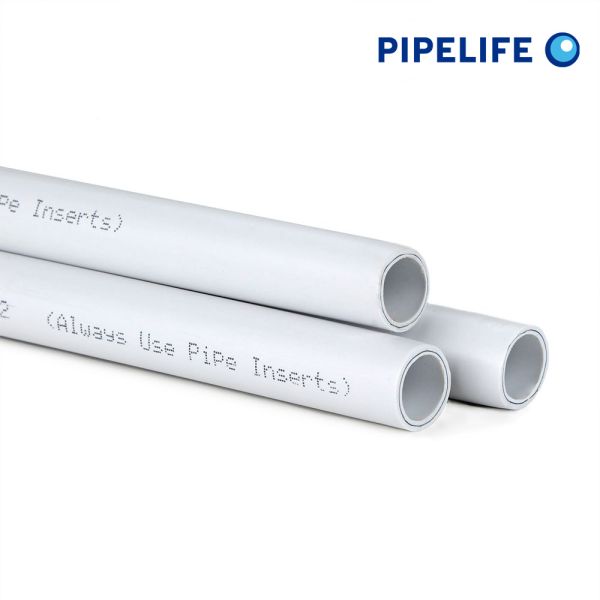Pipelife PB Pipe Lengths

Useful Information
What are PB Pipe Lengths Used For?
PB (Polybutylene) pipe lengths are designed for use in both hot and cold commercial and domestic heating systems. The pre-cut lengths offer flexibility and are ideal for installations that require specific measurements, particularly in confined spaces or for direct line installations.
Key Features
- Material: Made from high-quality Polybutylene, known for its durability and resistance to environmental stress.
- Flexibility: The pipes can bend slightly, allowing for easy installation without needing additional fittings for minor bends.
- Pre-cut Lengths: Available in specific lengths for convenient and precise installation.
- Approvals: Complies with BS7291-Class S and WRAS, ensuring quality and safety standards.
- Noise Reduction: PB's material properties contribute to low noise transmission in systems.
- Guarantee: Comes with a market-leading 50-year guarantee, reflecting its durability and quality.
Specifications
- Material: Polybutylene (PB)
- Available Sizes: Metric sizes of 15mm, 22mm, and 28mm
- Colour: White
- Length: 3 metres
- Barrier Layer: 5-layer EVOH Barrier for enhanced performance
- Approvals: Fully compliant with BS7291-Class S and WRAS
- Guarantee: Comes with a 50-year guarantee
PB Pipe Dimensions
| Size (mm) | Outside Diameter (mm) | Wall Thickness (mm) |
| 15 | 15±0.1 | 1.5-1.8 |
| 22 | 22±0.1 | 2.0-2.3 |
| 28 | 28±0.1 | 2.6-2.9 |
Working Temperature & Pressure
| Application | Normal Working Temperature (°C) | Maximum Working Temperature (°C) | Maximum Working Pressure |
| Cold Water | 20 | 20 | 12 |
| Hot Water | 65 | 95 | 6 |
| Central Heating | 82 | 105 | 3 |
| Underfloor Heating | 35-55 | 60 | 3 |
Installation Instructions
- Cutting: Use a specific pipe cutter to ensure a clean, straight cut.
- Inserts: Use approved BS 7291 system pipe inserts before fitting to maintain pipe integrity.
- Bending: Utilize standard elbow fittings for sharp bends, and gentle bends can be achieved using pipe clips.
- Fittings: For push-fit or compression fittings, ensure the insert is placed before securing the fitting.
- Expansion and Contraction: Take into account the high coefficient of expansion for PB pipes during installation.
- Leak Testing: After installation, conduct a thorough leak test by gradually introducing water to the system.
- Final Checks: Ensure all connections are secure and the pipe layout allows for thermal expansion.
What is the Difference Between PB and PEX Pipe?
PEX (Crosslinked Polyethylene) and PB (Polybutylene) pipes are both popular for plumbing applications, but they have key differences:
- Material Properties: PB is known for its flexibility and resistance to environmental stress cracking, while PEX is recognized for its high temperature and pressure resistance.
- Installation: PB pipes are generally more flexible and easier to handle, making them preferable in tight and complex installations.
- Longevity and Durability: PEX typically offers greater long-term stability, especially in high-temperature environments.
- Application Suitability: While both are used in plumbing systems, PEX is often preferred for high-temperature applications due to its heat resistance.



